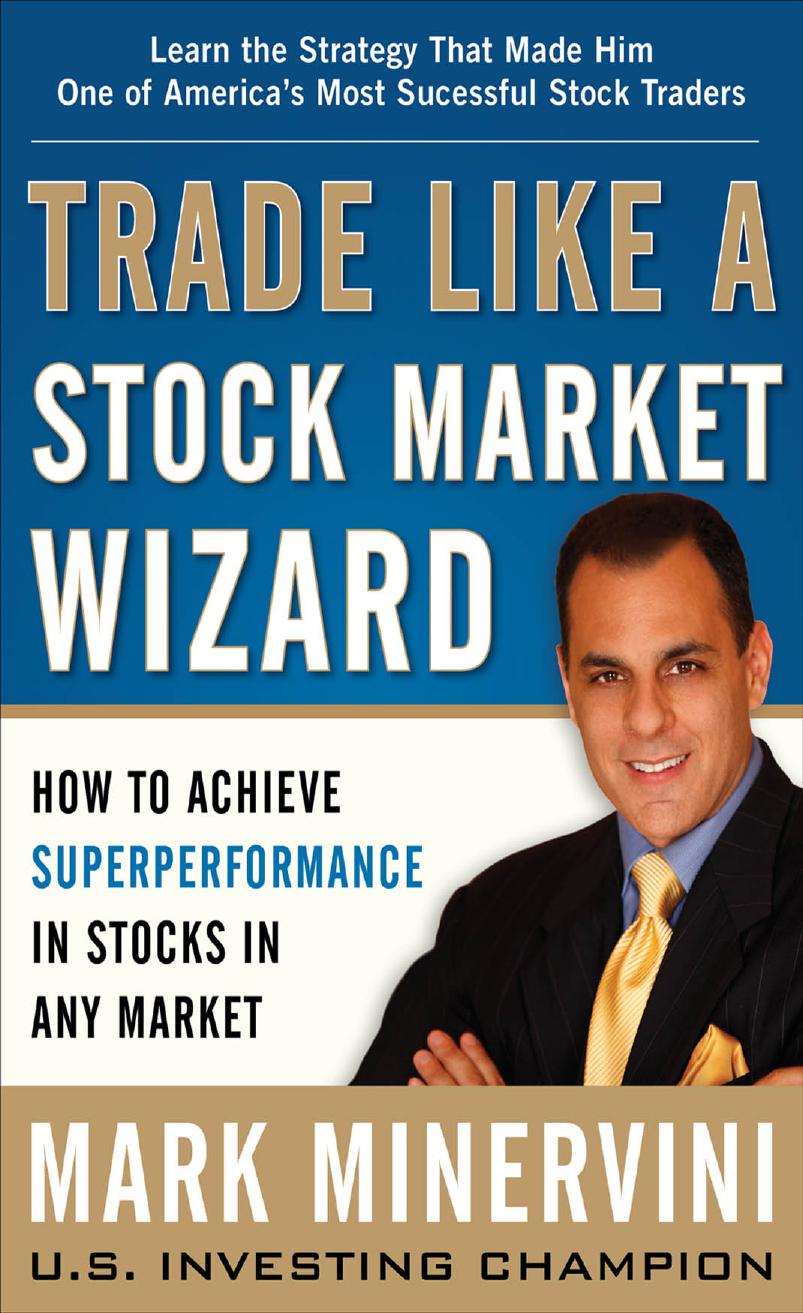Trade Like a Stock Market Wizard: How to Achieve Super Performance in Stocks in Any Market by Mark Minervini

Author:Mark Minervini [Minervini, Mark]
Language: eng
Format: mobi, epub, pdf
Publisher: McGraw-Hill
Published: 2013-03-21T05:00:00+00:00
C H A P T E R 8
A S S E S S I N G E A R N I N G S Q U A L I T Y
157
Think about it. We know from the previous discussion that when inventories—particularly of finished goods—rise faster than sales, that means product is building up. The company has made more than it can sell in current market conditions, assuming that there isn’t a good reason for the buildup, such as the need to stock new retail outlets. This is even a bigger problem if the inventory stockpile is of highly depreciable goods. When receivables are also rising, the company hasn’t been paid for what it has sold to its customers. This is a double whammy that often forecasts trouble ahead: Consumers aren’t buying, and retailers aren’t selling and therefore aren’t able to pay for the product they’ve got. The manufacturer isn’t collecting on what it sold, and its warehouses are full of more product than it can ship.
There could be a reasonable explanation for the rising receivables, such as a new product line or new customers in a different industry that have been given longer credit terms. Maybe orders have not shipped as expected because of a production delay. Whatever the reason, it’s worth investigating to see if this is a red flag or a situation that’s easily explained.
In the example below, the rate of increase in total inventories is four times that of sales and receivables are up three times the rate of sales. More troubling is the fact that finished goods and work in progress are up big relative to raw materials. This could indicate an unusually large stockpile of goods. To the extent that those goods are depreciable, the product on hand will be worth less and less as time goes by, eroding margins and ultimately earnings. This type of scenario should raise a red flag.
Figure 8.9 Red
flag
scenario
Example of an inventory buildup with finished goods and receivables growing at a rate faster than sales.
Download
Trade Like a Stock Market Wizard: How to Achieve Super Performance in Stocks in Any Market by Mark Minervini.epub
Trade Like a Stock Market Wizard: How to Achieve Super Performance in Stocks in Any Market by Mark Minervini.pdf
This site does not store any files on its server. We only index and link to content provided by other sites. Please contact the content providers to delete copyright contents if any and email us, we'll remove relevant links or contents immediately.
Bad Blood by John Carreyrou(5802)
Principles: Life and Work by Ray Dalio(5361)
Rich Dad Poor Dad by Robert T. Kiyosaki(5191)
Management Strategies for the Cloud Revolution: How Cloud Computing Is Transforming Business and Why You Can't Afford to Be Left Behind by Charles Babcock(4150)
The Confidence Code by Katty Kay(3599)
Thinking in Bets by Annie Duke(3556)
Playing to Win_ How Strategy Really Works by A.G. Lafley & Roger L. Martin(3146)
American Kingpin by Nick Bilton(3000)
Delivering Happiness by Tony Hsieh(2939)
Project Animal Farm: An Accidental Journey into the Secret World of Farming and the Truth About Our Food by Sonia Faruqi(2676)
Brotopia by Emily Chang(2600)
I Live in the Future & Here's How It Works by Nick Bilton(2541)
Mastering Bitcoin: Programming the Open Blockchain by Andreas M. Antonopoulos(2532)
The Power of Habit by Charles Duhigg(2519)
The Content Trap by Bharat Anand(2506)
The Marketing Plan Handbook: Develop Big-Picture Marketing Plans for Pennies on the Dollar by Robert W. Bly(2428)
The Tyranny of Metrics by Jerry Z. Muller(2422)
Building a StoryBrand by Donald Miller(2380)
Applied Empathy by Michael Ventura(2341)
